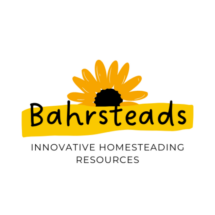How to Make Your Own Maple Syrup: A Step-by-Step Overview
Making maple syrup is a rewarding process that transforms tree sap into a delicious, natural sweetener. Whether you’re a hobbyist or considering syrup production for a small business, understanding the equipment, temperature conditions, and process is key. Here’s everything you need to know to get started.
Choosing the Right Trees
Maple syrup is typically made from the sap of sugar maples (Acer saccharum), but red and black maples can also be tapped. Sugar maples have the highest sugar concentration, making them the best choice for efficient syrup production.
Tree Requirements:
- At least 10–12 inches in diameter (about 40 years old)
- Healthy, with no signs of disease or damage
- Located in a clean environment, away from road pollution
Tapping the Trees
Tapping is the process of inserting a spout (spile) into a tree to collect sap.
The best time to tap is late winter to early spring when temperatures fluctuate between freezing (below 32°F) at night and above freezing (around 40–45°F) during the day.
Equipment Needed:
- Drill with a 5/16-inch or 7/16-inch drill bit
- Spiles (metal or plastic)
- Collection buckets or food-grade tubing
- Lids to keep out debris
How to Tap a Tree:
- Drill a hole at a slight upward angle, about 1.5–2 inches deep.
- Insert the spile firmly into the hole and hang a bucket or connect tubing.
- Collect sap daily, as it flows best during warm days and cold nights.
Collecting and Storing Sap
- Fresh sap is about 98% water and only 2% sugar.
- It must be processed quickly to prevent spoilage. Store sap in clean, food-grade containers at temperatures below 38°F and use it within a few days.
Storage Tips:
- Keep sap in a shaded, cool area or refrigerate it.
- Filter out debris using a fine mesh or cheesecloth before boiling.
Boiling the Sap (Evaporation Process)
To make syrup, sap must be boiled down until it reaches the correct sugar concentration. The process removes water and caramelizes sugars, giving syrup its characteristic flavor.
**IMPORTANT: DO NOT BOIL SAP IN YOUR HOME. BOIL IT OUTSIDE. If you're wondering why, having your kitchen coated in stickiness is not a fun cleanup. We only do the final boil and bottling inside.
Equipment Needed:
- Large, shallow evaporator pan (or a large stockpot for small batches)
- Heat source (wood-fired evaporator, propane burner…)
- Candy thermometer or digital refractometer
- Filtering cloth or syrup filters
Boiling Process:
- Start Evaporation: Heat sap in a shallow pan, allowing it to evaporate quickly.
- Monitor the Temperature: As water evaporates, the temperature rises. The target temperature for syrup is 219°F (7°F above the boiling point of water, which varies by elevation).
- Final Boil: As the sap thickens, transfer it to a smaller pot to finish boiling. Be cautious—syrup can foam up and burn quickly at this stage.
- Check the Density: Syrup should be about 66–67% sugar, which can be measured with a hydrometer or refractometer.
Filtering and Bottling Syrup
After reaching the correct consistency, hot syrup should be filtered to remove sugar sand (natural minerals).
Filtering Process:
- Use a pre-filter and fine syrup filter while the syrup is hot (around 180–190°F).
- Avoid over-filtering, as it can reduce yield.
Bottling Tips:
- Pour syrup into sterilized glass bottles or food-safe plastic containers at 185°F to prevent bacteria growth.
- Seal immediately to create a vacuum.
- Store in a cool, dark place; once opened, refrigerate to maintain freshness.
Storage and Shelf Life
Properly sealed maple syrup can last for up to a year in a pantry and indefinitely in a freezer. If mold appears, simply remove it and reheat the syrup to 190°F before re-bottling.
Common Storage Issues:
- Crystallization: Occurs when syrup is too concentrated. Reheat and stir to dissolve crystals.
- Fermentation: Happens if syrup is not boiled enough or stored improperly. Discard if it smells off.
Scaling Up: Larger Equipment for Bigger Batches
If you plan to produce syrup on a larger scale, consider investing in:
- A stainless steel evaporator with a flue pan for faster evaporation
- Reverse osmosis machines to remove water before boiling
- Vacuum tubing systems to increase sap collection efficiency
Fun Uses for Maple Syrup
- Besides pancakes and waffles, maple syrup can be used in:
- Baking and desserts
- Glazing meats and vegetables
- Homemade granola and yogurt toppings
- Cocktail sweeteners
- Coffee sweatener
Final Thoughts
Making maple syrup requires patience and attention to detail, but the reward is worth the effort. Whether you tap a few trees for personal use or scale up production, the process remains a time-honored tradition that connects you to nature.
